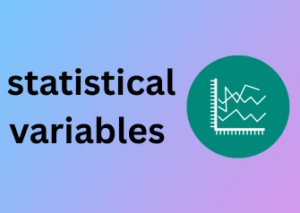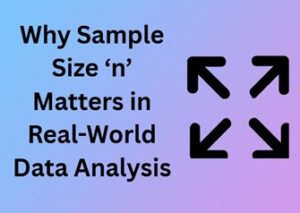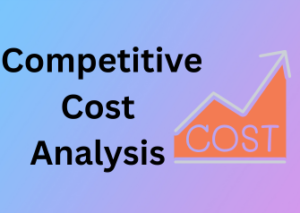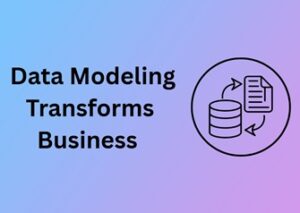Let’s be real for a moment: mastering the art of retail isn’t just about what you’re doing—it’s also about grasping what your competitors are up to. But here’s the thing—competitive intelligence often gets a bad rap. Some even jump to the conclusion that it’s “spying.” Rest assured, it’s not! Instead, think of it as smart, ethical strategy. Let’s break it down.
What exactly is competitive intelligence? Competitive intelligence is simply the practice of gathering and analyzing publicly available information about the competition. It’s done to improve decision-making and fine-tune your own strategies. And let me emphasize: this is NOT about snooping or propriety dodging. Everything is above board.
Why Does It Matter in Retail?
The retail world moves fast. Fads come and go; consumer behaviors evolve overnight. Without keeping an eye on your competitors, you risk being left in the dust. Tracking competitors helps you:
- Identify market gaps they’ve missed (hello, opportunity!).
- Gain insights into what’s working or failing in your industry.
- Stay proactive instead of reactive when trends shift.
It’s Not About Copying—It’s About Refining Your Strategy
Let’s make this clear: competitive intelligence isn’t about trying to mimic your rivals move-for-move. That’s not strategy—it’s imitation, and it rarely works. What you should be doing instead is identifying their strengths and weaknesses. If you see a competitor launching a new type of product that’s resonating with consumers, think to yourself: “How can I take this idea and improve it? How can I make it work for my brand and audience?”

Tips for Ethical and Effective Competitive Research
Now that we’ve established the value of keeping tabs on your competitors, let’s dive into exactly how you can do this effectively and ethically:
- Use public resources: Look at their websites, social media pages, press releases, and online reviews. These are goldmines of data, and it’s all public information.
- Shop their stores: Go ahead, browse their shelves—online or in-person. Note their pricing models, packaging designs, or what’s in their clearance bins.
- Monitor industry news: A lot of insights about your competitors can be uncovered just by keeping your ear to the ground. Subscribe to relevant trade publications and news outlets.
- Check out customer sentiment: Reviews and social media comments can give you a clear idea of what customers appreciate or dislike about competing brands.
Crunching Market Patterns for Smarter Storefront Choices
When was the last time you walked past a vacant storefront and thought, “This would be the perfect spot for a new business!”? Well, while intuition can go a long way, making smart storefront choices is all about data, not just gut feelings. With market patterns waiting to be uncovered, retailers who know how to crunch the numbers can unlock huge competitive advantages in both location strategy and market positioning. Let’s dive into how understanding and analyzing market patterns can transform where and how you sell your products.
Why Market Patterns Matter for Storefront Success
Choosing the right location for your store is more than just looking for foot traffic. It’s about identifying key market trends that allow you to position yourself exactly where your target customers are. Whether you’re opening your very first store or expanding to new areas, analyzing patterns like population growth, business density, and local spending habits can ensure that you don’t just open your doors—you open them in the right place.
This isn’t guesswork—it’s a playbook used by successful retailers time and again. Consider this: if you know what kind of businesses thrive in certain neighborhoods, you’re not just reacting. You’re predicting success by riding on established local patterns.
How to Use Data to Make Smarter Choices
We live in a world overflowing with data, so why not use it to your advantage? Here’s a step-by-step breakdown to get you started with analyzing market patterns for storefront decisions:
- Understand local demographics: Who lives in the area? Are they families, professionals, students, or retirees? Age, income levels, and cultural preferences can give a solid indication of whether or not your products will resonate with the local crowd.
- Track foot traffic over time: Most areas have peak shopping hours and days, so understanding when people are out and about ensures your store can capture maximum attention.
- Evaluate nearby competitors: Are nearby businesses complementary or competing? For instance, if you’re selling athletic wear, being near a gym is likely a win. On the other hand, opening right next to a fierce competitor might not be ideal.
- Examine consumer trends: Research online search patterns or buying behaviors. Are customers in this area searching for your type of products? Data can ensure you’re meeting demand rather than creating it from scratch.
Becoming Location-Savvy Without the Stress
You don’t have to be a data scientist to uncover gold in market analytics. Tools like geo-spatial mapping software, foot traffic heatmaps, and even insights from your business analytics platform can simplify the process. Many retailers also collaborate with real estate experts or competitive intelligence services to guide their decisions—because sometimes, expertise is just a consultant away.
Still, here’s the key takeaway: data will only inform your decision. The final choice? That’s where your personal understanding of your brand and audience comes into play. Opt for the place that speaks to your business’s identity while aligning with market numbers. It’s about finding the perfect mix of heart and head.
Spotting Pricing Trends Before They Become Common Knowledge
Retail is full of surprises, and pricing trends are one of those things that can catch even the savviest business owner off guard. But here’s the good news – spotting these trends before they’re mainstream isn’t rocket science. It just takes a bit of focus, the right tools, and a mindset for staying proactive instead of reactive. Ready to learn how to get ahead of the pricing curve? Let’s dive in!
Why Early Detection Matters
Let’s face it: retail pricing is a moving target. Stay too high, and customers may leave you in their dust for competitors; go too low, and you risk slicing into your profit margins. The sweet spot often comes down to detecting the shifts in market demand and competitive pricing before the herd. Early adopters of data-based pricing adjustments can position their offerings effectively, which means happier customers and healthier profit margins.
Where to Start Your Pricing Trend Hunt
So, how do you uncover these elusive pricing trends? Here’s a breakdown:
- Track industry benchmarks: Industry reports and market analysis from reputable organizations provide a big-picture view of where pricing is headed. Staying tuned to updates in your sector allows you to plan for upcoming adjustments rather than react to them.
- Pay attention to your competitors: Sign up for your competitors’ email lists, follow their social media accounts, and monitor their online store pricing. Patterns in their promotions or pricing changes can hint at an emerging trend.
- Analyze your sales data: Take a good look at your own numbers. Are certain price points driving more volume? Are some products suddenly underperforming? Your sales data is a goldmine waiting to be mined for actionable insights.
Using Data to Stay Ahead
Here’s one thing you should know: successful pricing trend strategies are data-driven. Fortunately, technology makes this easier than ever before. Tools for competitive intelligence and price monitoring, such as dynamic pricing software, can provide real-time insights into the pricing movements across your industry. By crunching data continuously, these tools help you leap forward when trends shift.
Another data source you shouldn’t overlook is customer feedback. Reviews, surveys, and even direct conversations can reveal what price points your target demographic finds reasonable—or excessive. Listen to what customers are saying about price and leverage that knowledge to win trust and loyalty.
Proactive, Not Reactive: Turning Insight Into Action
The key to using pricing trends to your advantage is to act quickly, but never carelessly. Here’s how you can set the stage for success:
- Test pricing strategies: Fight the urge to make sweeping changes overnight. Instead, run short-term tests with adjusted pricing across a few products or categories to gauge customer reactions.
- Bundle products: Offer bundles that provide additional value to customers while maximizing revenue. This approach can allow for flexible pricing adjustments that appeal to deal-seekers without slashing profits.
- Build flexibility into your pricing model: Whether it’s through discounts for loyal customers, tiered pricing, or flash sales, having room to maneuver lets you adjust to trends quickly and effectively.

Tracking Customer Habits to Sharpen Your Inventory Mix
Let’s face it: understanding your customers is essential to running a successful retail business. But it’s not just about knowing the basics like who they are and what they buy. To really stay ahead, you need to dig deeper into their habits—how, when, and why they shop. By tracking customer habits, you can fine-tune your inventory mix and keep your shelves stocked with the right products at the right time.
Why Customer Habits Are Your Secret Weapon
Customer shopping habits reveal patterns that can be game-changing for your business. Think of them as breadcrumbs leading you straight to what matters. If you can anticipate what your customers want before they even know they want it, you’re not just meeting demand; you’re creating an unrivaled shopping experience.
For example, do your customers tend to buy certain items during specific seasons or holidays? Are there products they pair together frequently? Insights like these can help you make smarter decisions about how much stock to order and when to promote certain products.
Using Data to Decode Customer Behavior
The data doesn’t lie. Start by **analyzing customer purchase history** to identify trends. Look for patterns like frequently purchased products, peak buying times, and even geographic preferences if your store has multiple locations or an online component.
Some effective strategies for tracking these habits include:
- **Customer loyalty programs**: If your store has one, dig into your loyalty software. What are your top customers buying, how often, and how much are they spending?
- **Surveys and feedback forms**: Sometimes, the best way to know what your customers need is as simple as asking them directly. Offer small incentives to encourage participation.
- **Social media insights**: Are customers talking about your products online? Monitoring shares, likes, and comments can help you spot what’s trending with your audience.
Matching Your Inventory to Real Customer Needs
Once you’ve tracked and understood your customers’ habits, the next step is applying that knowledge to optimize your inventory. Here’s where the magic happens. By aligning your stock with what your customers want, you can reduce wasteful overstock, avoid empty shelves, and improve profitability.
Some actionable tips include:
- **Focus on your bestsellers**: Always keep these in stock. If customers find their favorite items gone, they might think twice about shopping with you again.
- **Introduce limited-time options**: Seasonally inspired or trend-driven products can create urgency. Customers love grabbing something new and exclusive.
- **Streamline underperforming items**: Don’t let slow movers take up valuable shelf space. Consider discounting them to make room for higher-demand goods.
Tech Tools to Make Tracking Simpler
Tracking customer habits doesn’t have to be overwhelming. There are countless tools designed to help retailers gain valuable insights easily. Point-of-sale (POS) systems, for instance, often come with built-in analytics to track sales trends. Inventory management software can flag products that sell quickly versus those that linger.
Don’t forget about online shopping analytics, too. If you have an e-commerce presence, use tools like Google Analytics or built-in store dashboards (e.g., Shopify) to see which products are being clicked on, abandoned in carts, or flying off the virtual shelves.
Exposing New Markets You Didn’t Realize Existed
Imagine this: you’ve been running a successful retail business for years. Things are going well, and you’re confident in your strategy. Then, out of nowhere, your competitor starts targeting a market you hadn’t even considered—and they’re thriving. Frustrating, right? But here’s the thing: spotting untapped markets isn’t about luck or guesswork. It’s about leveraging competitive intelligence to uncover opportunities that are hiding in plain sight. Let’s break it down, shall we?
1. Let the Data Guide You
Sometimes, the answer to “What’s next?” lies hidden in the data you already have. Competitive intelligence tools let you analyze industry trends, consumer demographics, and emerging shopper behaviors. By studying what your competitors are doing—and what they’re not—you can identify gaps in their coverage or niches they’re leaving untouched. These gaps could represent high-value markets you’ve overlooked.
For example, is your competitor seeing a surge in sales from a particular geographic region? Or are they tailoring offerings for a specific demographic or lifestyle choice that your brand hasn’t considered yet? If so, this intel might just signal an opportunity to expand your reach with confidence.
2. Spot Global and Niche Markets
Competitive intelligence also helps you think beyond your current scope. It can shed light on global trends or hyper-specific markets you might never have explored. Think niche audiences like eco-conscious shoppers, tech-savvy buyers seeking smart home gadgets, or even pet owners looking for premium products.
Remember, a market doesn’t have to be massive—it just has to be influential or untapped enough to provide long-term growth opportunities. Often, these markets are ripe for innovation, and being one of the first businesses to enter a space means you get to stand out as a pioneer.
3. Use Competitors’ Success & Missed Opportunities As Clues
Businesses often leave breadcrumbs that reveal where they see potential growth—new product lines, partnerships, or rebranding campaigns. Competitive intelligence is like a magnifying glass that helps you pick up on these clues. Are they introducing new offerings in an emerging category? Are they tailoring digital ads to a younger demographic or rolling out region-specific campaigns? These tactics can inform your own market expansion strategy.
Pay attention not only to where they’re succeeding but also to where they’re falling short. If a competitor fails to serve a particular market segment well, it could signal a chance for you to step in and do it better.
4. Test the Waters Without Diving In
Identifying a new market doesn’t mean you have to jump in headfirst. Competitive intelligence allows you to de-risk your approach by testing potential audiences before making big commitments. Whether it’s through limited product launches, localized campaigns, or small-scale partnerships, experimenting with new markets can provide valuable insights without straining your resources.
Technology Tools That Make Competitive Tracking a Breeze
Let’s face it—keeping an eye on competitors can feel like juggling plates while riding a unicycle. That’s where technology swoops in to save the day! Thanks to modern advancements, tracking your competitors doesn’t have to be tedious or time-consuming. The right tools can make competitive intelligence not just easier but, dare I say, enjoyable. Let’s break it all down.
Why Rely on Technology for Competitive Tracking?
In today’s dynamic retail environment, relying on manual processes alone to monitor your competitors is like mapping a cross-country road trip with a paper map—it’s inefficient, time-consuming, and prone to errors. Technology tools allow you to gather, analyze, and utilize competitive insights more efficiently. Plus, they minimize guesswork and let you zero in on actionable data.
Still not convinced? Here are just a few things these tools can help you with:
- Monitor competitor pricing in real-time: See how much your rivals are charging and identify patterns in their pricing strategies.
- Track product launches: Know exactly when competitors introduce hot new items or services.
- Analyze customer sentiment: Tools can scan online reviews to uncover what customers really think about your competition.
- Pinpoint gaps in the market: Specialized tools reveal areas your rivals have yet to explore, giving you an edge.
Must-Have Tools for Competitive Tracking
There’s no shortage of tools designed to transform competitive intelligence into a seamless process. Below are some of the standout solutions that can make a real difference:
- Google Alerts: A fast, free, and easy way to monitor mentions of your competitors. Simply set up alerts for key terms like their brand name or product, and you’ll receive updates straight to your inbox.
- SEMrush: This powerhouse tool isn’t just for SEO. Use it to unearth insights into your competitors’ online advertising, content strategies, and keyword rankings.
- Prisync: A tailored service for retailers to track competitor pricing in real-time. It even allows you to automate your own price adjustments to stay competitive.
- Brandwatch: A market-leading tool for social listening, so you can analyze online chatter about competing brands. Understand what customers are praising (or complaining about) and leverage their feedback for your gain.
- SimilarWeb: Ideal for digging deep into your competitors’ web traffic data—see where their visitors are coming from and how long they’re staying.
Pro Tips for Making the Most of These Tools
Now that we’ve covered some tech must-haves, let’s talk about how to use them like a pro:
- Focus on metrics that matter: Don’t drown in data—hone in on what aligns with your business goals, like pricing trends, customer sentiment, or market opportunities.
- Automate wherever possible: Look for tools that offer alerts and reporting features. The less manual work, the more you can focus on strategic action.
- Regularly review your findings: Competitive analysis isn’t a one-and-done deal—it’s an ongoing process. Schedule time every week or month to review insights and tweak your strategy.
Turning Competitive Insight Into Actionable Plans
Gathering competitive intelligence is exciting—uncovering hidden gems of information about your market and competitors can feel like cracking a secret code! But here’s the thing: knowledge is only as valuable as what you do with it. Success in retail doesn’t boil down to having data; it’s about using it effectively to drive decisions. Let’s dive into how you can turn all that insight into tangible, actionable plans that push your business forward.
What Does “Actionable” Even Mean?
Before we get into the “how,” let’s clarify what it means for an insight to be actionable. Simply put, an actionable plan is one you can implement immediately—something you know will deliver real-world results. For example, knowing your biggest competitor offers free two-day shipping may spark a decision to revamp your delivery strategy. Actionable insights are ones that bridge the gap between information and measurable change for your business.
Step 1: Organize Your Findings
Imagine trying to navigate a cluttered room. It’s hard to know what’s important when nothing is in order, right? The same goes for your competitive intelligence. Once you’ve gathered your research, take the time to sort it:
- Sort by category: Is it about pricing, marketing tactics, customer preferences, or product trends?
- Prioritize: Identify which pieces of information are the most relevant to your business. Not all data will be equally valuable!
- Filter out noise: The retail market is full of distractions. Focus on insights that align with your specific goals.
Step 2: Match Data with Goals
Competitive intelligence should always tie back to your overall business objectives. Are you looking to increase market share? Improve profit margins? Launch a new product line? For example, if your goal is to optimize inventory management, insights into changing customer preferences should spark a plan to diversify or refine your product assortment. On the other hand, insights about pricing trends lend themselves more to decisions about your discount strategy.
Step 3: Build Your Strategy
With your findings and goals aligned, it’s time to create a real-world action plan!
- Brainstorm solutions: Based on what you’ve learned, what steps can you take to outpace competitors? Involve your team to bring fresh perspectives.
- Define clear actions: Specify exactly what needs to happen next. For example, “launch a social media campaign” is way too vague. Instead, try, “Post five Instagram reels showcasing our new eco-friendly product line this month.”
- Assign responsibilities: Delegate tasks effectively so everyone knows what’s expected of them. A solid plan needs accountability built in.
- Set timelines: Every action should have a deadline to keep things moving efficiently.
Step 4: Test, Track, Tweak
Here’s the secret sauce to success: No actionable plan is ever set in stone. The retail world is constantly evolving, so your strategies need to follow suit. Regularly monitor how your changes are performing and look for areas to improve:
- Track KPIs: Are you hitting your specific business targets? For example, if your goal was to increase foot traffic, check if customer counts are rising.
- Stay flexible: If something isn’t working, pivot! Agility is a key competitive advantage.
- Celebrate and iterate: When strategies hit the mark, take a moment to celebrate. Then refine and scale those wins!
Turning Insight into Impact
Ultimately, competitive intelligence isn’t just about learning—it’s about doing. By turning insights into actionable plans, you can evolve your business faster than the competition, delivering exactly what your customers need. The bottom line? Don’t let all that valuable intel gather dust. Use it to fuel your growth, adapt to the market, and create a retail experience your competitors only wish they’d thought of.











